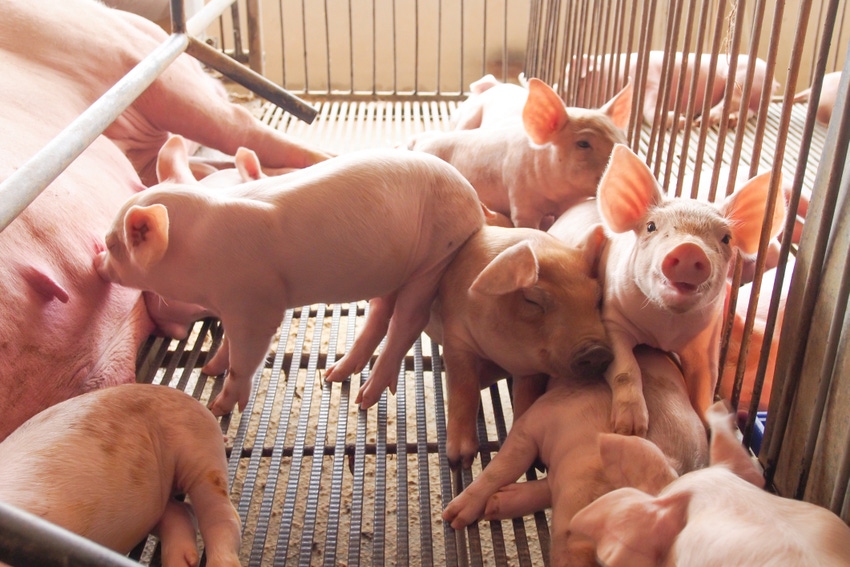Animal stress in swine production focus of research program
North Dakota State researcher to examine stress response to cross-fostering and transport ramps in swine industry.
March 11, 2020

North Dakota State University assistant professor of animal sciences Chris Byrd is focusing his research program on animal stress.
“I consider myself to be an animal welfare scientist,” said Byrd, who focuses primarily on swine. “I investigate ways we can optimize the production environment for animals we raise for food. We want the animals to be healthy, make sure they can perform natural behaviors and that they have a positive experience throughout their lifetimes."
Byrd joined the North Dakota State faculty in March 2019 after earning his master's and doctoral degrees at Purdue University, where he worked with the animal behavior group headed by Donald Lay, research leader of the Livestock Behavior Research Unit at the U.S. Department of Agriculture's Agricultural Research Service.
“Animals aren’t able to talk to us, so I use their behavior and physiology to draw conclusions about their experience,” he said.
Among other things, he is researching a system of measures to see if blood tests can reveal the amount of stress an animal is experiencing, an announcement from North Dakota State said.
Byrd is also examining the effects of cross-fostering — in which extra piglets are moved to other litters so they have access to milk — in preweaning piglets.
“Some research shows the piglets we are cross-fostering have a harder time integrating themselves into the non-biological litter — something you’d probably expect,” Byrd said. “The question I’m asking is: Does the stress they experience early in life affect how they handle stress later on?”
Byrd noted that producers put animal welfare as their top priority, and the industry is constantly changing. “We can always do better. Hopefully, my research helps producers mitigate some stressors experienced by their animals so they can ensure the well-being of their animals and continue to make a good living,” Byrd said.
Another project will look at how the use of ramps for loading truck trailers may stress pigs. “Since they are not frequently exposed to ramps during the production phase, ascending a ramp into a trailer can be a very stressful experience,” Byrd said.
In a USDA-funded study, North Dakota State researchers will explore how the introduction of a small ramp in nursery enclosures for three- to eight-week-old animals can reduce stress later on when they reach a market weight of 280-300 lb.
Byrd will collaborate with North Dakota State colleagues Sarah Wagner and Jennifer Young to continue their preliminary work in this area. He also plans to work with a local commercial facility to see if it is feasible on a larger scale, the announcement said.
“With ramps, there are a lot of implications for animal welfare; it is stressful for animals. Market pigs can slip or fall if they are not used to a ramp,” Byrd said.
New methods and measurements are expected to come from Byrd’s work, meaning improved welfare for livestock and better profit margins for producers, the university pointed out.
“I would say we are getting better and better every day in our understanding of how animals are experiencing their world,” Byrd added.
You May Also Like



